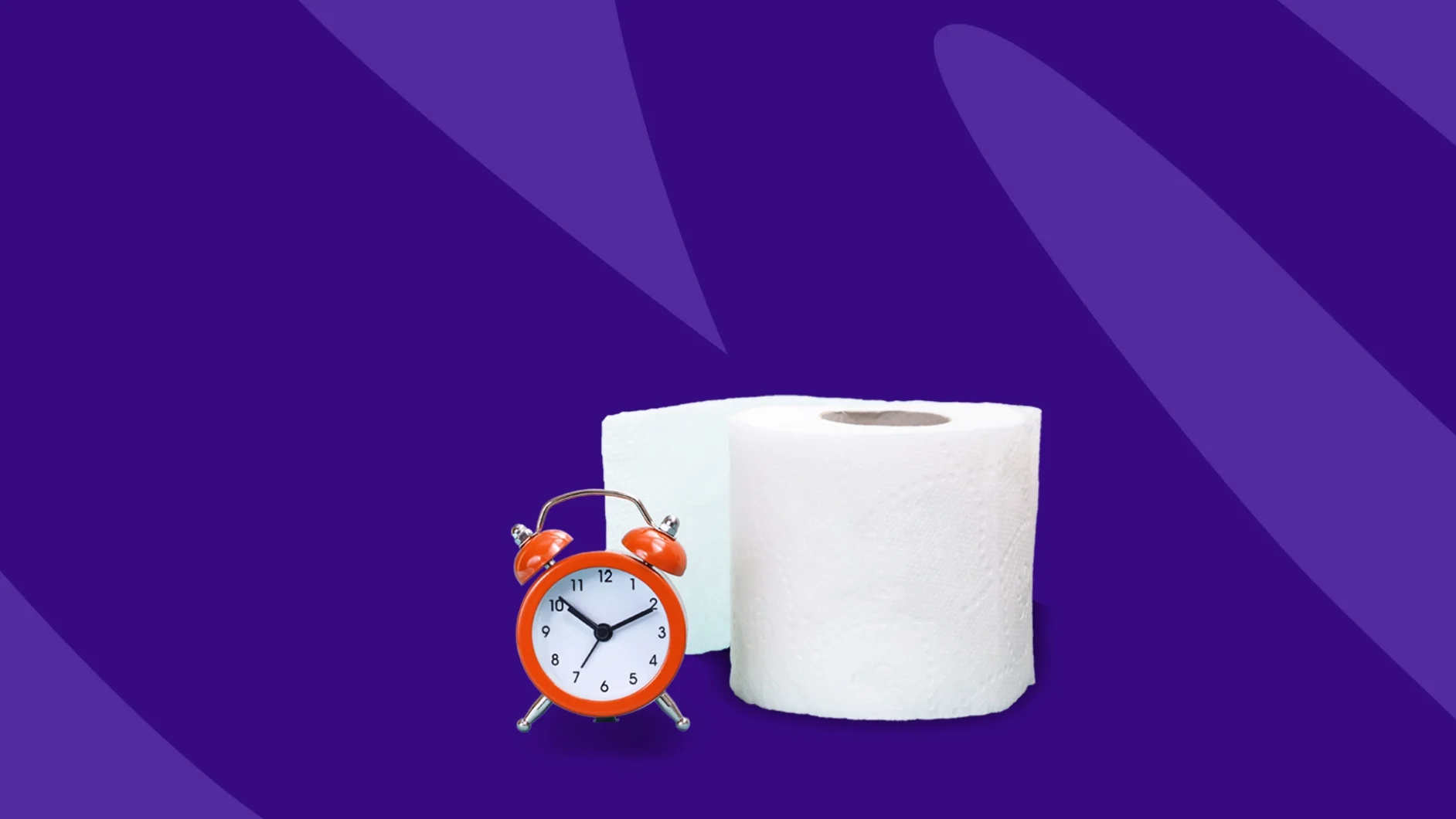Key takeaways
MiraLAX is a brand-name, over-the-counter laxative used for treating occasional constipation in people ages 17 and older.
It can be taken in the morning or evening, at the time that works best for you—as long as you take it consistently, around the same time each day.
This laxative is designed to be taken as one dose per day, with food or on an empty stomach.
People with certain medical conditions, such as kidney disease and inflammatory bowel disease, should not use MiraLAX without consulting a healthcare provider first.
MiraLAX (polyethylene glycol 3350) is a brand-name laxative used to treat occasional constipation. It is an osmotic stool-softening medication, which means it works by drawing water into the colon to soften stool and ease bowel movement naturally. It acts differently from stimulant laxatives like Senokot (senna) and Dulcolax (bisacodyl), which act on the inner lining of the intestinal tract, causing contractions that help push out stool. This over-the-counter medication may also be used for bowel preparation and cleansing in patients preparing for a colonoscopy, a procedure to examine the large intestine.
There is no one best time to take MiraLAX; morning or evening works. However, it is designed to be taken in one dose daily. Keep reading to learn more about how to use MiraLAX safely and effectively to minimize side effects.
When is the best time to take MiraLax?
“MiraLAX is a once-a-day laxative; take it either in the morning or evening, with or without food, following your doctor’s advice,” says Raj Dasgupta, MD, internist and associate professor of clinical medicine at the Keck School of Medicine at the University of Southern California. Pick a time of day that suits your routine and stick to it. Consistency, or taking the medication at the same time each day, is important.
“MiraLAX is intended for the short-term treatment of constipation,” says Dr. Dasgupta. You can use it for up to seven days, although the active ingredient in MiraLAX typically produces a bowel movement within 1-3 days. If your constipation lasts longer than one week, you should be evaluated by your healthcare provider to determine other treatment options.
How much MiraLAX can I take?
“It is not recommended to take MiraLAX more than once per day, as it can come with some side effects, including diarrhea, bloating, and nausea,” says Jordan Calabrese, MD, medical director of Sana Lake Recovery.
Each dose of MiraLAX contains 17 grams of powdered polyethylene glycol (PEG) 3350 that should be dissolved in four to eight ounces of liquid before drinking. Do not mix with starch-based thickeners used for difficulty swallowing.
“Overdosing on MiraLAX is highly unlikely, but if you overstep the recommended dosage, you can experience some side effects like diarrhea, which could lead to dehydration,” Dr. Calabrese adds. Other symptoms of an overdose may include thirst, seizures, and confusion.
Can I take MiraLAX with my other medications?
MiraLAX powder does not contain inactive ingredients, is gluten-free, and doesn’t contain sugar or preservatives. Polyethylene glycol has no significant interactions at doses used for constipation. It should not be taken at the same time as other supplements or prescription drugs because it may affect their absorption.
What are the side effects of MiraLAX?
MiraLAX is generally safe and well-tolerated when used correctly. It is FDA approved for treating constipation in children and adults aged 17 years and older. Ask a healthcare provider for children younger than 17 years of age. However, it can cause common side effects like:
- Bloating
- Gas
- Nausea
- Diarrhea
- Cramping
- Swollen abdomen
- Rectal bleeding
“Individuals might also suffer from other severe side effects, which can include anaphylaxis,” says Dr. Calabrese. This is not common but can happen if you have an allergy to the active ingredient in the medication. Additionally, there have been reported cases of symptoms like headaches, anxiety, tremors, lethargy, and mood swings among children using PEG 3350 over a long period.
Healthcare professionals prefer PEG 3350 over other types of laxatives because it is better-tasting and has limited side effects. It is also considered safer than the PEG-electrolyte combination solutions, used for bowel cleansing, as it doesn’t cause salt absorption. Still, suppose you experience severe side effects, including diarrhea and abdominal pain, while on this laxative, or your constipation continues even after one week. In that case, it is best to speak with a healthcare professional.
Who should not take MiraLax?
MiraLAX may not be safe for everyone. Talk to your provider before taking this medication if:
- You have kidney disease
- You have appendicitis
- You have a bowel blockage
- You are hypersensitive to polyethylene glycol
- You have inflammatory bowel disease or irritable bowel disease
- You are experiencing nausea, abdominal pain, or vomiting
If you are pregnant or breastfeeding, consider seeking medical advice before taking this medication. Your healthcare provider will let you know if there are any food restrictions or medications to avoid while on this medication.
- MiraLAX, MiraLAX®
- Polyethylene glycol 3350, MedlinePlus (2016)
- Polyethylene glycol, StatPearls (2023)
- Role of polyethylene glycol in the treatment of functional constipation in children, Journal of Pediatric Gastroenterology and Nutrition (2017)
- PEG and thickeners: A critical interaction between polyethylene glycol laxative and starch-based thickeners, Journal of the American Medical Directors Association (2016)
- LABEL: MIRALAX- polyethylene glycol 3350 powder, for solution, DailyMed (2023)
- Constipation – self-care, MedlinePlus (2022)
- Osmotic and stimulant laxatives for the management of childhood constipation. The Cochrane Database of Systematic Reviews (2016)




